UNIT9 Guide: Welcome to the Metaverse
Everything you need to know about the next frontier of brand experience
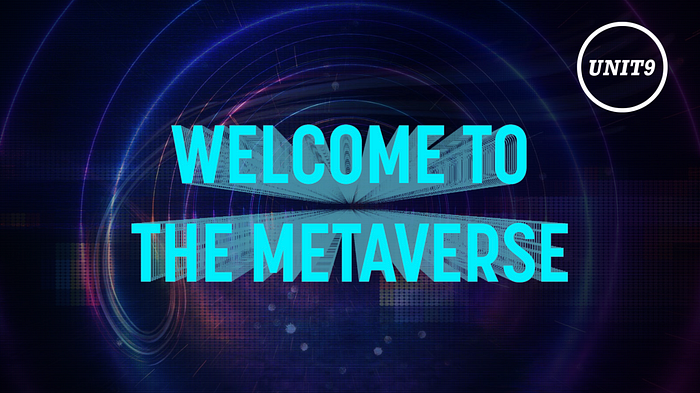
In our post-pandemic reality of high dependency on all things digital, consumer perceptions and interactions with brands are increasingly moving towards two-way, dynamic experiences that straddle the virtual and physical worlds. And this gives brands a compelling reason to converge their hybrid brand experiences into one ecosystem.
How? By exploring the limitless possibilities of the Metaverse.
In this guide, we’ll take you deep into discovery of the new virtual brand worlds that are poised to become the next frontier of immersive consumer engagement. We’ll cover the catalysts bringing about these changes, outline the benefits, and reveal the key principles for creating engaging brand universes that are out of this world.
What is the Metaverse?

The Metaverse is a virtual shared space that blends realities in real-time, and is well on the way to becoming a highly influential platform for both social interactions, cultural properties and economic exchanges.
Widely heralded as a successor to the internet, the Metaverse takes digital experiences one step further by allowing users to fully immerse themselves in an alternative world.
For brands, it will play a crucial role in forming their own ecosystems and ensuring synchronicity across multiple channels, as well as acting as a platform for hybrid physical and digital experiences.
Popular gaming platforms such as Fortnite, Roblox and Minecraft are already forming the basis of smaller metaverses. But as technology evolves and the catalysts for chance starting gaining momentum, we can start thinking bigger.
The Metaverse in Culture
Sci-fi fans will already be familiar with the idea of the Metaverse thanks to a number of references in popular culture throughout the 90s up until the present day.

Neal Stephensen first introduced readers to the ‘Metaverse’ with the self-coined phrase featuring in his 1992 science fiction novel, Snow Crash. Stephensen’s simulated world takes the form of an urban environment accessible via personal and public terminals — or for the die-hard contingent, portable goggles.
Fast-forward to 1998 and the release of The Matrix resurfaces the idea of a parallel, computer-based reality where users can interact with each other and express themselves. Morpheus’s description of The Matrix itself highlights the all encompassing, always-on nature of this simulated construct of the world.
Ready Player One is perhaps the most well-known recent exploration of virtual worlds in popular culture. Originally a novel, the film adaptation was released in 2018 and imagines a future where people can switch effortlessly between a vast network of artificial worlds, ranging from the educational to the recreational.
Catalysts — what’s driving our entry into the Metaverse?
The shift towards widely-adopted Metaverse activity is not an if; it’s a when. There are a number of catalysts that are fast-tracking our transition into the virtual world.
1) Consumer behaviour
Shifting consumer trends are an early indicator for brands to sit up and pay attention, and we’re seeing considerable movement when it comes to the adoption of digital behaviours.
Gen Z are a key demographic driving this shift. For this group, gaming platforms are a social space first, a channel for play second. Hanging out with friends in digital worlds has become normalised, and the intrigue is now spreading out to other age groups.
Customers are progressively embracing immersive tech and are keen to learn more. Over half of those surveyed recently by Neilsen said they wanted to use more VR & AR in their daily lives. And with 73% of consumers confirming they would choose to visit a brand home virtually, it seems we’ve reached the opportune time to explore what this type of immersive experience could look like in the metaverse.
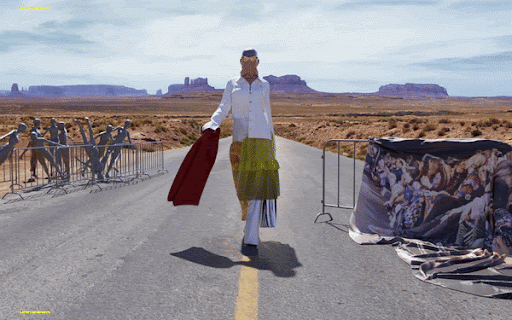
2) Digital fashion
Spending more time in virtual spaces goes hand in hand with another key trend that’s skyrocketed recently — the world of digital fashion.
Digital fashion and crypto clothing offer consumers the chance to experiment with an extension of their real life style — the ultimate expression of individuality. And digi-sapiens aren’t afraid to part with their money — annual spending on gaming loot boxes and avatar skins is set to reach to a staggering $50 billion by the end of 2022.
Plus, the economic and environmental benefits of digital consumption vs physical consumption are important to the eco-conscious audience, making digital shopping in the Metaverse an appealing choice that rests easy on the conscience.
3) NFTs
2021 has been a big year for NFTs. The market grew an astonishing 1785% in three months alone, clearly signposting their snowballing popularity. This surge in NFT adoption is driving up the value of virtual assets, which is in turn piquing interest in the more general digital economy.

As this new trend for digital consumption becomes normalised, so too does the idea of an alternative world to discover, collect and interact with these items. Enter the Metaverse — a virtual space where NFT activity can thrive.
4) Wearables
Whilst we’re not at Ready Player One level quite yet, the hotly-anticipated launch of XR wearables onto the consumer market is drawing tantalisingly closer, and there’s no doubt this will complete the shift to mass metaverse adoption.
Wearables will allow 24/7 access to virtual brand worlds wherever you are. Whether you’re alone at home, doing the weekly shop or out drinking with friends — access to a range of immersive brand experiences will only be a mere swipe away.
Apple, Facebook, Google and Snapchat have all thrown their names in to the hat in the great wearable ARms race. The huge investment from these tech giants is going to bring the greatest disruption to the market yet.
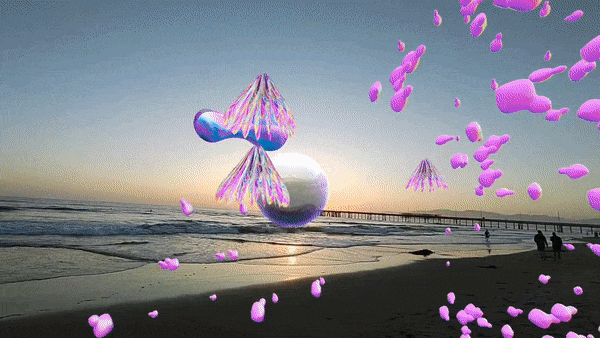
What are brands already doing in the space?
Although the Metaverse is at a nascent stage, with consumers and technology still transitioning from early 21st century digital user behaviours such as websites and socials, it won’t be long before they catch up. So future-facing brands need to prepare their Metaverse strategy now in order to operate, innovate and become pioneers in this hybrid era.
A number of brands are leading the charge into this foray:
Gucci’s recent partnership with gaming platform Roblox reveals a fashion-themed wonderland for users to explore, with the options for their digital avatars to try on and purchase digital clothing.

Netflix have also jumped in on the Roblox hype, launching a gamified version of Starcourt Mall from Stranger Things, perfect for immersing fans in some creepy 80s realness.
O2’s flagship digital music venue has recently opened its virtual doors on Fortnite, offering audiences a range of games and culminating in an interactive live music experience.
However, the real creative and commercial opportunity for brands lies in owning their own Metaverse — one that isn’t confined by a platform’s capabilities, aesthetics or defined user base.
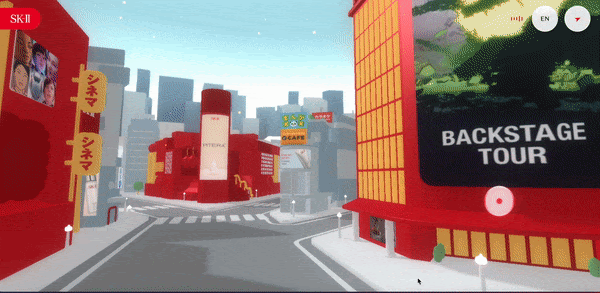
SK-11 City is a great example. In this mini virtual city inspired by the streets of Tokyo, visitors can immerse themselves in the world of skincare brand SK-11. The brand’s digital world includes a cinema, backstage tour, themed streets and a Mall.
What are the benefits of brand-owned Metaverses?
Metaverse exploration is the ultimate creative and commercial choice for future-facing brands. Let’s take a look at why:
1) Meta-versatility
Owning their own platform means brands have the ability to adapt to shifting trends and change things up as much as they like without having to consult the platform. Need to update the latest product ranges? Simple. Want to create new breakout spaces? Do it.
This versatility allows brands to shape their content and spaces how they please.They can create surreal, otherworldly environments which can be constantly built upon, adapted or even completely redesigned in minimal time.
By being the masters of their own universe, brands can effortlessly keep pace with the speed of culture whilst exercising full creative control.

2) Keep it on-brand
Controlling the content also means that the entire virtual world can be kept on-brand.
While metaverse collaborators may have to march to Roblox or Fortnite’s tune, metaverse builders can set the boundaries themselves and fully control how their brand is perceived without limitation — from design and aesthetic through to activities and messaging.
This allows virtual visitors to become completely immersed in the brand without the risk of dilution from partner platforms.
3) All under one virtual roof
The biggest overarching benefit is that owned metaverses allow all brand activities to be brought together in one place.
Gone are the days of separate apps for each new campaign, temporary microsites for limited edition products, and online events for different time zones. With a virtual brand world, all of this can live together in one easily accessible location for audiences around the world to tap into and enjoy around the clock.
Keeping things contained also means there’s a single path to purchase, making it more convenient than ever before for metaverse visitors to meet, interact, play, browse and complete transactions — all in one place.
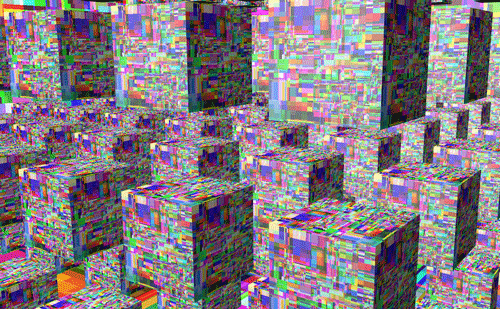
4) Grow your tribe
Just as a purpose-led physical flagship can unite similar-minded consumers in-person, a brand metaverse can do the same in the virtual space, with one key difference — the reach will surpass anything possible in a physical-only setting.
This means brands can foster and strengthen their global communities by providing them with a limitless shared space to interact with each other and the brand, sharing their passions and interests..
The support of a united tribe behind a brand can’t be underestimated — it would be a clever strategic decision for any commercially focussed brand to grow and nurture these connections.
Principles for creating virtual brand worlds
The benefits are clear — but in order to create the most impactful and engaging Metaverse experiences, there are some key principles that brands should keep in mind in order to keep virtual visitors coming back for more.
1) Create inconceivable worlds
Don’t just recreate — reimagine. Building an event or experience virtually means creative licence to develop completely unique and otherworldly environments.
Technology allows us to achieve the inconceivable — this is a chance to totally reimagine an environment rather than just recreate it, and give your audience something new that they would never be able to experience IRL.
Real-time audience interaction, playing with proportions and projecting mesmerising graphics can all enhance the virtual space, creating a totally magical, out-of-this-world experience.

2) Don’t forget emotion
Give your audience the feels. Underpinning any successful experience, virtual or physical, is its ability to evoke emotion.
It’s important to create powerful content that galvanises visitors and makes them feel something. Take a virtual concert for example. Emulating the reciprocal flow of energy between a live performance and the audience is key — and thanks to immersive sound and killer VFX, it’s possible.
Like a rush of blood to the head when you’re in an impassioned crowd, a dynamic Metaverse experience should stir up these human emotions, creating an atmosphere that leaves a lasting impression on your audience.

3) Participation > Viewership
Put the user in control. The most engaging brand experiences involve getting hands-on — and virtual worlds should be no different. Playing an active role transforms the viewer into a participant and ensures long-term impact.
In a world where everyone can now be creators, brand fans are displaying a growing desire for autonomy. Virtual environments can facilitate this by offering real-time, AI-powered or personalised interactions that allow users to influence events around them. Through interactive streams, aggregated commenting and click control, we can invite audiences to make things happen within a virtual brand world — whether that’s activating VFX, triggering audio, or even leaving their mark on the space.

4) Engineer scarcity
The power of supply and demand. Although metaverses naturally eliminate barriers on capacity and allow vast audiences to be reached, there are also advantages to keeping certain activations limited in order to create a sense of exclusivity for attendees who are ‘the only ones’ to have that exact experience.
Scarcity will always equate to perceived value in the real world.. So in the virtual equivalent, this effect must be engineered — by capping sign-ups, booking viewing slots, or by using blockchain technology. Doing this will cause demand to sky rocket.

5) Keep evolving
Continue the connection. Building their own metaverses not only allows brands to own the aesthetic and customise the build, but also garner data to measure engagement and finesse the overall experience.
The best virtual brand worlds will put these insights back into creating new, innovative and ever-evolving content to keep audiences engaged and coming back for more.
Intuitive brands will also see the complexities of navigating multi-platform, hybrid consumer journeys as the next CX frontier, adapting to purchase funnels that straddle both digital and physical universes to enhance the experience further.

Key takeaways
So — that’s our guide to the Metaverse and what it means for brand experience. Here are the five main things you need to remember:

We’ll see you in the Metaverse.
-UNIT9
